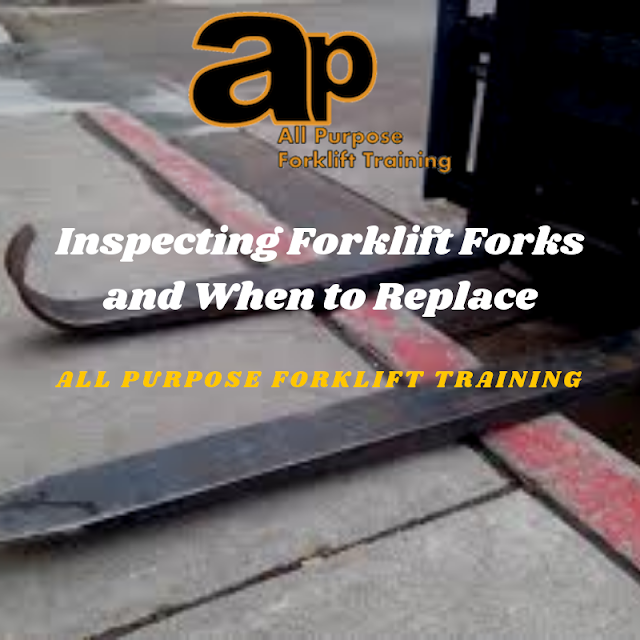Inspecting Forklift Forks for Wear and Tear Signs
The alloy forks on your forklift may seem indestructible, but eventually, they wear just like any other device component. In reality, 29 percent of independently-inspected forks fail safety standards.A quick once-over isn't enough to determine if a fork needs to be mended. Because of this, ANSI/ITSDF B-56.1 criteria require pliers be inspected at least once a year (for single change operations). In the same way, OSHA requires all powered industrial trucks, including forks, be analyzed daily or after every change if they are utilized 24/7.
Cutting on your fork inspections can lead to a snapped fork, dropped load along with an all-around bad moment! Read on to understand how to prevent accidents before they happen.
Regular use induces forks to bend, crack, or wear down over time. Forks can also be damaged by:
- centric series alterations
- Accidents (running into partitions, columns, etc).
- Overloading forks beyond their rated capacity
If you are not Certain if your truck/forks are working beyond capacity, try this online calculator which also accounts for almost any attachments
The way to Solve Forklift Forks
Check blade and shank angle - If the shank and blade angle transcend 93 levels, the fork has to be substituted. Don't permit machine shops to bend forks back into position!
Ensure straightness of blade and shank - If the shank or the blade have been flexed, the fork can't be utilized.
Inspect forks for surface cracks - Assess the entire surface of each branch for cracks.
Professional Suggestion - the heel area and welds are probably locations for cracks to grow.
Check fork suggestion height - The tips of your two forklift blades must be at about the exact same height. If the difference between the elevation of every tip exceeds three percent of the amount of the blade, then the forks need to be corrected. As an example, if your forklift blade is 48-inches long, the difference in height between both forklift blade can't exceed 1.44 inches.
Inspect the placement lock - Ensure the positioning lock along with other fork retention devices is all working correctly.
Use calipers to measure depth - The metal onto a fork pops down slowly, but eventually, the forks can't manage their original load capacity. Only 10% wear reduces load power from 20%, at that stage, the forks have to be replaced. Using forklift calipers, gauge the depth of your fork blade, heel and hook using the shaft as a starting place.
Assess fork hooks - Using calipers, look for wear along with straightness of fork hooks. In the event the lip of the hook reaches the back of the caliper, the forks must be removed from the support.
Hopefully this summary of fork inspection has been useful. For questions, please contact our support department for programs and more at 888 501-1355. We also offer forklift operator training at our locations, or we can return to you.
Read Article: How to Get Forklift and Scissor Lift Training

Comments
Post a Comment